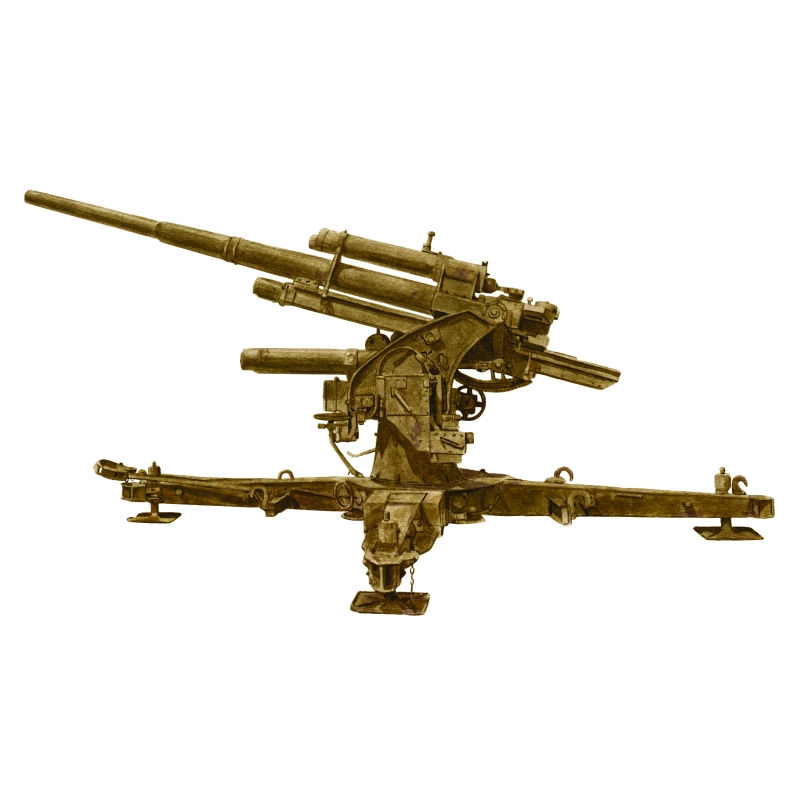SPECIFICATIONS
CREW: 10
DIMENSIONS: Length 17 ft 5 in / Width 7 ft 7 in
WEIGHT: 18,000 lbs
MAXIMUM RANGE: Vertical 11,000 yards / Ground 16,000 yards
RATE OF FIRE: 15 rounds per minute
PROJECTILE WEIGHT: 20 lbs
A Lethal German Anti-Tank Gun
The German 8.8cm Flak (known as 88mm Flak, or just 88) is one of the most famous¬ weapons of World War II. Designed in the early 1930s primarily as an anti-aircraft gun,¬ the 88 was best known for its lethal anti-tank capabilities.
A Barrel in Three Replaceable Sections
More than 18,000 88s were built before and during the war. The first-generation 88mm Flak¬ 18 entered service in 1933. (Flak is short for flugabwehrkanone, meaning "aircraft defense¬ cannon.") In 1936 Krupp began production of the Flak 36, a more economical weapon with¬ a barrel in three sections rather than one. If a section was worn down from firing, it was¬ possible to replace only that section rather than the entire barrel.
Difficult to Conceal, but Superior Range and Power
The 88 was pressed into service as an improvised anti-tank weapon in 1940 when existing¬ German anti-tank guns were proving less adequate against Allied armor. Though large,¬ heavy and difficult to conceal, the weapon compensated with its range and power. During¬ the 1941 campaigns in North Africa and the Eastern Front, the 88 demonstrated its superior¬ effectiveness. The Allies did not have a comparable weapon early in the war, magnifying the¬ 88's success and sealing its reputation as a formidable tank killer.

